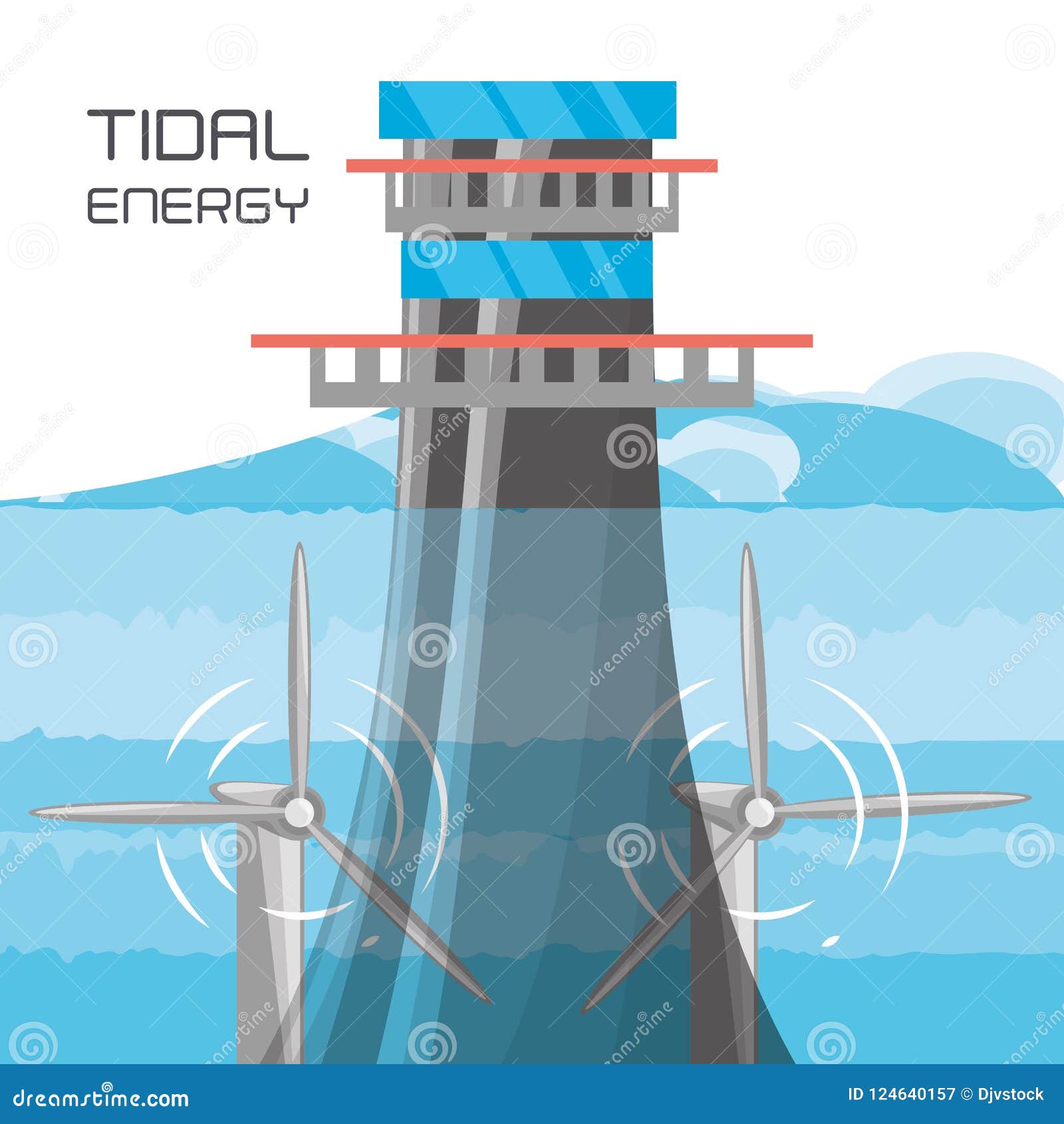

However, the cost of reversible electrical generators are more expensive than single direction generators. Therefore, tidal generators are designed to produce power when the rotor blades are turning in either direction. But because the sea water can flow in both directions in a tidal energy system, it can generate power when the water is flowing in and also when it is ebbing out. The movement of the sea water is harnessed in a similar way using waterwheels and turbines to that used to generate hydro electricity. The daily ebbing and flowing, back and forth of the oceans tides along a coastline and into and out of small inlets, bays or coastal basins, is little different to the water flowing down a river or stream. The motion of the tidal water, driven by the pull of gravity, contains large amounts of kinetic energy in the form of strong tidal currents called tidal streams. Tidal energy, just like hydro energy transforms water in motion into a clean energy. The difference this time is that the water flows in and out of the turbines in both directions instead of in just one forward direction. The generation of electricity from tides is similar in many ways to hydro-electric generation we looked at in the hydro energy tutorials. Since the position of the earth and the moon with respect to the sun changes throughout the year, we can utilise the potential energy of the water contained in the daily movement of the rising and falling sea levels to generate electricity.

Therefore Tidal Energy can be considered as a renewable energy source as the oceans energy is replenished by the sun as well as through tidal influences of the moon and suns gravitational forces. The main big advantage of this is that the tides are therefore perfectly predictable and regular unlike wind energy or solar energy, allowing miles of coastline to be used for tidal energy exploitation and the larger the tidal influence, the greater the movement of the tidal water and therefore the more potential energy that can be harvested for power generation.

The time taken for a tidal cycle to happen is about 12 hours and 24 minutes (called the “diurnal cycle”) between two consecutive high tides allowing Oceanographers and Meteorologist to accurately predict the ebb and flow of the tides around the oceans many years in advance. These tides are predictable and regular resulting in two high tides and two low tides each day with the level of the oceans constantly moving between a high tide and a low tide, and then back to a high tide again. So we now know that the constant rotational movement of the earth and the moon with regards to each other causes huge amounts of water to move around the earth as the tides go in and out. So we can say that the tides are turning for alternative energy. Then spring tides and neap tides produce different amounts of potential energy in the movement of the sea water as their effects differ from the regular high and low sea levels and we can use these tidal changes to produce renewable energy. Neap tides occur during the quarter moon phase. The net result is a smaller pulling action on the sea water creating much smaller differences between the high and low tides thereby producing very weak tides. The other tidal situation arises during neap tides (minimum) when the gravitational pull of the moon and the sun are against each other, thus cancelling their effects.
#Tidal energy full#
These spring tides occur during the full or new moon phase. Such tides are known as spring tides (maximum). When the moon is in perfect alignment with the earth and the sun, the gravitational pull of the moon and sun together becomes much stronger than normal with the high tides becoming very high and the low tides becoming very low during each tidal cycle. This ebbing and flowing of the tides happens twice during each period of rotation of the earth with stronger weekly and annual lunar cycles superimposed onto these tides. Likewise when the earth and the moons gravity are at 90 o to each other, the influences of these two gravitational forces is weaker and the water flows away from the shore as the mass of water moves to another location on the earth, creating a “low tide” condition. When the earth and the moons gravity lines up with each other, the influences of these two gravitational forces becomes very strong and causes millions of gallons of water to move or flow towards the shore creating a “high tide” condition.


 0 kommentar(er)
0 kommentar(er)
